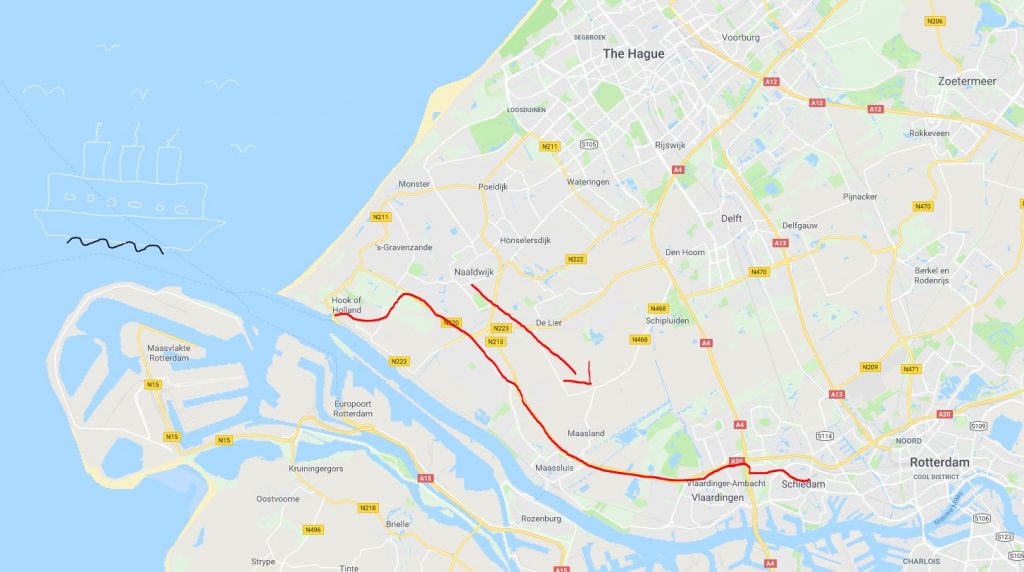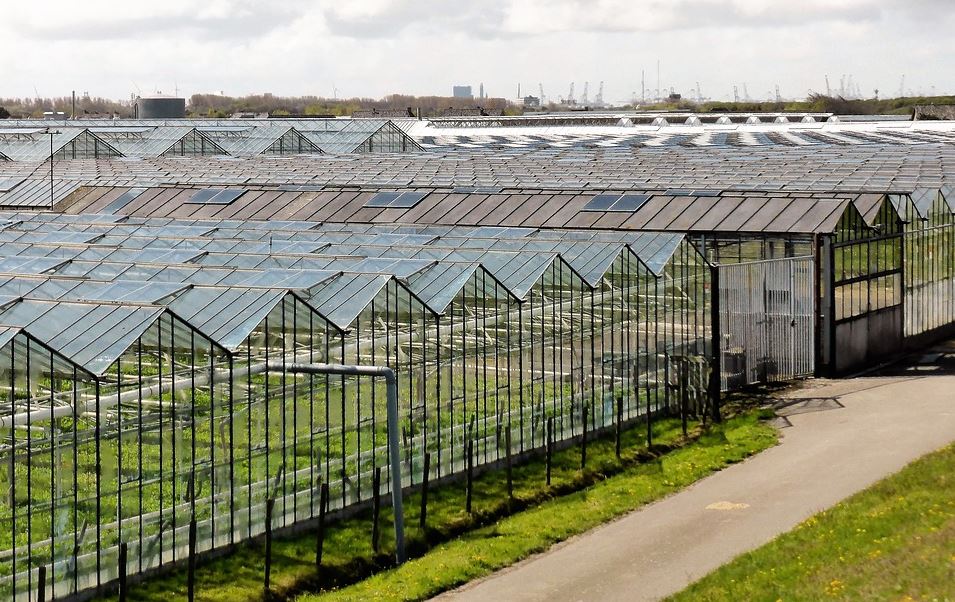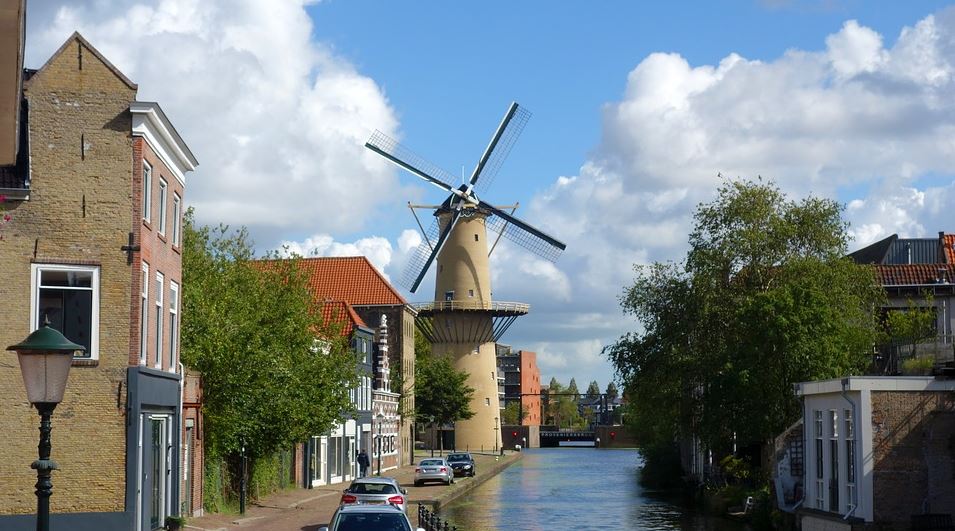 Route: 711, Hook Of Holland to Schiedam (now replaced by Metro trains)
Route: 711, Hook Of Holland to Schiedam (now replaced by Metro trains)
Operator: RET
Frequency: 30m
Time: ~35m
Cost: Free with a rail & sail ticket
Date Of Trip: 24/7/18
As previously mentioned, I’m really not one for flying. The first time I got on a plane, I spent the first half an hour whimpering and shaking into my mum’s bosom while she had me in a protective headlock.
I was 31 at the time.
In order to conquer my very real fear, I bought a couple of books on the subject. One of which was co-written by a retired pilot with tens of thousands of hours of flying experience to his hard-earned insignia, Captain Keith Godfrey.
I didn’t have a clue how planes could possibly stay afloat, what with them being massive and all that, but the wonders of lift and wing shape was explained in a way that a nervous nerd like me could easily understand.
Turbulence, why it feels like you’re falling backwards just after take off, what if an engine blows up, all the scary stuff.
Feeling unusually confident, I blew my poker winnings on a trip to New York for me and El in 2012, but still had a really uncomfortable, uneasy experience being so far off the ground. Ultimately, heights are rubbish.
Either way, I couldn’t have made it anywhere near a plane again without Captain Keith, and even though I’m not particularly keen on the idea of getting on one again any time soon, I wouldn’t rule it out completely for far flung destinations.
(In addendum: Captain Keith runs a Flying Without Fear course which looks belting.)
 The Boat That Doesn’t Rock
The Boat That Doesn’t Rock
This explains why we’ve decided to get the overnight ferry from Harwich – via a train from Manchester to London, a bus across the capital, and another train into the wilds of Essex – rather than spend about £50 on return flights from Amsterdam, which would get us there in a couple of hours.
That, and my love of going on ferries, obviously.
We’ve got a cabin on the Stena Hollandica, the biggest boat of its type in the world, and our digs are much more spacious than our hotel room in Amsterdam will turn out to be. It has a cinematic porthole window, air conditioning which actually works, and very nearly a fist-shaped hole in the ceiling after I accidentally thump it while stretching my arm out in my sleep.
As we’re due in to dock at 7am CET, we set our alarms for 6 o’clock. What we don’t bargain on is the change in time zone completely baffling both of our phones, to the extent that neither of them go off. It’s a voice over the ship’s tannoy which wakes us up with a 30 minute warning at 6:30.
We have a speedy pit stop, gather our chattels, and are soon bouncing down the gangplank towards passport control, where the guard who processes us has hints of spiky Manga hair underneath his hat, and probably still listens to Korn.
The stop for the 711 is pretty much right outside the Hook Of Holland terminal, where ferries have been shuttling to and from the UK since 1893. The enormous cranes and endless oil refinery pipes of Europoort loom over the mouth of the Nieuwe Waterweg to our south, making Trafford Park and Runcorn look like wimpy interlopers by comparison.
We are met at the perspex bus shelter by a Dutch lady in a long blue dress and her dog, a Lassie type of collie with snuggleable fur the same colour as Philip Schofield’s hair. He’s called Shep and carries a couple of orange and grey panniers on his back, with his lead and top secret stash of dog biscuits inside.
“I have to carry my luggage, so it’s only fair that he has to carry his.” the lady in the long blue dress reasons.
“You know,” she continues, after we’ve been waiting for around 10 minutes, “this is all just really inconvenient.”
“Oh right,” I reply, “do you make this trip fairly often?”
“Well, no, just once a year. Twice if you include the return.”
They’ve been extending the busy Rotterdam Metro out here since April 2017, in a move similar to converting pre-existing railways to Metrolink use in Manchester. The only problem is that the build is running behind schedule, necessitating that the 711 replacement bus carries on for at least another couple of months.
Our lift pitches up a few moments later, and while the heat isn’t quite as distressing as it was on the 205 in London yesterday, it’s still clocks in just about north of 30° on the inside of the packed bus, and we’ve got 24km to go.
We are lucky enough to snaffle a couple of seats, which happen to be right in front of an information screen, and although Shep is told to lie down by his owner, he’s more interested in looking out of the windows. Who can blame him?
We pass mile after mile of misted-up glasshouses, growing fruit and veg in their millions. This part of South Holland isn’t really a hive of flower bulb activity as you might expect, that’s generally further north towards Leiden, but the views are still great.
 Small. Far Away.
Small. Far Away.
The bus takes a no-nonsense route towards Schiedam, much of it along the A20 dual carriageway. We zoom by a series of windmills, canals, and plenty of cyclists taking advantage of the uniformly flat landscape. In fact, a mound of dirt fashioned into a motte on a construction site near Maasluis is probably one of the tallest peaks in the country, and would genuinely afford commanding views across the Rhine–Meuse–Scheldt delta should anyone feel like getting their climbing gear out to scale its intimidating 10ft peak.
“Are all wind turbines that tall?” I ask Eleanor as we pass by the base of what looks to me like a humongous grey example on the outskirts of Schiedam.
“Yeah, of course they are.” She replies. “You just normally see them from a very long way away.”
“We’re not on Father Ted, y’know.” I shoot back. ”It just looks bigger than normal.”
“Hmmm. It’s definitely not.”
Maybe they are bigger than normal, though, because Schiedam is home to the world’s tallest windmill. In fact, the world’s six tallest windmills are all here – not that we get to see any of them on our pinpoint path into the town centre.
We are deposited on the opposite side of the road to Schiedam Centraal, a station which has the deeply unfortunately distinction of having both the country’s first, and subsequently one of its worst train disasters happen in close proximity to its platforms.
The initial incident was in August 1856, which caused the deaths of three people. The next one, in the spring of 1976 claimed 24 lives, when the evocatively named Rhine Express, on its way from the Hook Of Holland to Munich, collided with commuter train heading out of Rotterdam.
Contingent with Rotterdam a few miles to the east, Schiedam is one of Holland’s unlikely hotbeds of cricket. Andre van Troost is its most famous exponent of willow on leather; a fearsome fast bowler who turned out for Somerset during the 1990s, and was inevitably nicknamed The Flying Dutchman. Former England batsman, Mark Butcher, said that van Troost made Waqar Younis (who was no slouch, with deliveries just shy of 100mph) “look like a medium pacer”.
His problem was control, and his tendency to spray the ball around like a feral tomcat led to his removal from the attack on one occasion in 1995, as the umpire deemed his style to be “intimidatory” towards Kent’s cowering men at the crease.
He was briefly the CEO of the KNCB, the Netherlands’ cricketing board in 2006/07, but left in a fallout with the ICC over the chronic lack of funding filtered down to non-test playing nations.
Thinking better of dodging the traffic on the main road outside Centraal’s entrance, we opt for the underpass instead, and are surprised to find that it isn’t full of graffiti, urine or villains. This’ll do very nicely.
We bid our farewells to Shep and the lady in the long blue dress, and catch a double decker intercity train bound for Amsterdam.
0 Comments